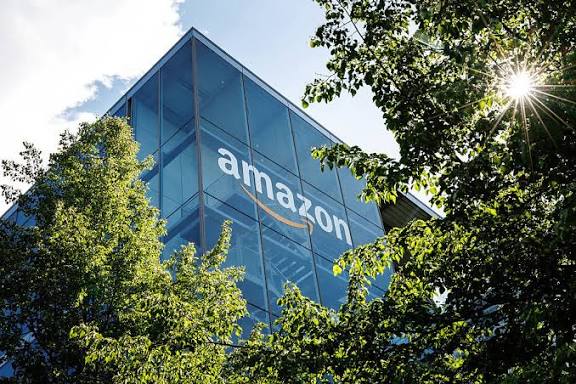Amazon Settles with FTC for $2.5B: What It Means for Prime Users

As part of the settlement, Amazon has agreed to create a “clear and specific” button to allow customers to reject a major membership. Today we will discuss about Amazon Settles with FTC for $2.5B: What It Means for Prime Users
Amazon Settles with FTC for $2.5B: What It Means for Prime Users
In a landmark agreement announced in September 2025, Amazon has settled with the U.S. Federal Trade Commission (FTC) over allegations that it engaged in deceptive subscription and cancellation practices for its Prime service.
While Amazon did not admit wrongdoing, it has agreed to pay $2.5 billion, divided as follows:
-
$1.0 billion in civil penalties to the FTC
-
$1.5 billion to reimburse affected consumers (through automatic payouts or claims)
Under the settlement terms, Amazon must also overhaul how it presents subscription offers and allow easier cancellation, as well as submit to external oversight.
Here’s an in-depth look — and what Prime users should take away.
The FTC’s Allegations: What Amazon Is Accused Of

To understand the implications, it’s crucial to unpack what the FTC alleged:
1. Deceptive Enrollment / “Dark Patterns”
The FTC claimed Amazon used confusing or misleading user interface designs — often called “dark patterns” — to nudge or trick consumers into enrolling in Prime without clear, explicit consent.
For example:
-
Buttons or checkboxes that implied “free shipping” but masked that selecting them would enroll the user in Prime.
-
Lack of clarity about the automatic renewal of Prime or the billing terms when consumers signed up.
2. Difficult Cancellation Process (“Iliad”)
Another core allegation was that Amazon made it unduly difficult for users to cancel their Prime subscriptions. Internally, Amazon reportedly referred to the cancellation flow as “Iliad” — a reference to the epic Greek war, implying a drawn-out and arduous process.
Key points:
-
Users had to confirm cancellation across multiple pages, sometimes affirming several times their intention to cancel.
-
Internal Amazon discussions reportedly expressed concern about making cancellation too easy, fearing it would hurt retention.
3. Restore Online Shoppers’ Confidence Act (ROSCA) Violations
The FTC’s legal case relied in part on the Restore Online Shoppers’ Confidence Act (ROSCA), which governs how companies must disclose “negative option” offers, such as free trials that convert into paid subscriptions.
The FTC argued Amazon violated ROSCA’s requirements by failing to clearly disclose that certain checkout actions would subscribe a person to Prime and by making cancellation unduly complex.
Who Is Eligible for Refunds / Compensation?
A large part of the settlement relates to reimbursing affected Prime users. The details:
-
Amazon will automatically issue $51 to eligible customers who signed up via certain “deceptive” offers and used fewer than 3 Prime benefits in the first year.
-
Users who did not qualify for automatic payments but believe they were harmed — for instance, attempted cancellation and failed — may submit claims.
-
The window of concern is June 23, 2019, to June 23, 2025, which is the period the FTC defined for eligible sign-ups.
In total, roughly 35 million Prime customers are estimated to qualify for some form of payout.
Note: The settlement explicitly states Amazon is not admitting wrongdoing; the payments arise from a settlement agreement, not a court finding.
What Changes Amazon Must Make
Beyond monetary payments, the settlement imposes structural reforms to Amazon’s subscription practices:
Clearer Disclosures at Enrollment
-
Amazon must clearly disclose all fees, the auto-renewal nature of Prime, billing frequency, and how to cancel.
-
The company must provide a clear and conspicuous button allowing customers to decline Prime during checkout (e.g. no ambiguous “No thanks, free shipping” labels).
Ease of Cancellation
-
The cancellation flow must be as easy as the sign-up flow. No excessive steps, delays, or confusing pages.
-
Amazon must ensure the same method used to enroll can be used to cancel (e.g. if enrolled online, cancellation must be possible via the same interface).
Monitoring & Compliance
-
An independent third-party monitor will oversee Amazon’s compliance with the settlement terms.
-
Amazon must avoid “misrepresentation” of subscription terms going forward.
These reforms aim to reduce deceptive or confusing practices and ensure consumers have fair control over their subscriptions.
Why Did Amazon Agree to Settle — Instead of Fighting?
Why did Amazon opt for a settlement rather than dragging this into a protracted trial? Several factors:
1. Risk & Cost of Litigation
The trial had just begun when the settlement was announced. The FTC had built a strong case regarding dark patterns and internal emails showing concern about subscription tactics.
Losing at trial could have led to even higher penalties and reputational damage. A settlement caps the downside.
2. Regulatory & Political Pressure
The FTC under Chair Andrew Ferguson (and previously under Lina Khan) has taken an aggressive posture on Big Tech and subscription abuses.
Public sentiment is increasingly critical of companies using maze-like interfaces to trap consumers. Amazon may have judged that settling offers better reputational control.
3. Business Continuity & Focus
Amazon stated it wanted to “move forward and focus on innovating” rather than get bogged down in years of litigation.
The settlement allows Amazon to avoid legal uncertainty and to reassure investors of stability as Prime remains central to its business.
What It Means for Current and Future Prime Users
For consumers in the U.S. (and potentially elsewhere, depending on Amazon’s global practices), this settlement has several implications — both immediate and longer-term.
Immediate Benefits / Actions for Users
-
If you were enrolled between June 23, 2019 and June 23, 2025, you may be eligible for a $51 refund automatically (if meeting the FTC’s criteria) or via claim.
-
If you tried to cancel Prime during that period and faced issues, you can file a claim under the settlement’s claims process.
-
Monitor your account and bank statements — if refunds are due, Amazon is obligated to issue them within a defined timeframe (often 90 days for automatic payouts).
Longer-Term Protections
-
Amazon must make subscription offers and fees more transparent. Future enrollments should clearly state what you’re paying, how renewal works, and how to cancel.
-
Cancellation should no longer be burdensome by design. You should be able to cancel in a straightforward way.
-
The independent monitor ensures Amazon remains accountable for its practices, reducing the likelihood of slipping back into opaque or manipulative subscription design.
Caveats & Limitations
-
This settlement applies only in the U.S. The terms and consumer protections elsewhere depend on local law and Amazon’s business policies in those jurisdictions.
-
The payout amounts and eligibility are narrow: many long-term, heavy users of Prime may not benefit (since they used many benefits, e.g., multiple deliveries, streaming, etc.).
-
Amazon did not admit liability, so the settlement is not a formal legal judgment of wrongdoing.
How This Fits into Amazon’s Business and Regulatory Landscape
Prime’s Role in Amazon’s Strategy
Prime is not just a perks program — it’s a core retention and monetization tool:
-
As of mid-2025, Amazon had over 200 million Prime members.
-
Subscription revenues are a major growth driver; in one report, Amazon earned over $12 billion from subscription services in a recent period, up ~12%.
-
The psychological “lock-in” of Prime — where members feel obliged to buy from Amazon to maximize their membership — is a strategic advantage. Making cancellation frictionless potentially weakens that lock-in.
Regulatory Momentum & Big Tech Scrutiny
The Amazon-FTC settlement is part of a broader trend of regulatory pressure on Big Tech over:
-
Subscription practices and “dark patterns” (e.g., Apple, Meta, Spotify)
-
Antitrust and monopolistic behavior cases (Amazon faces a separate, broader monopoly lawsuit by the FTC slated for trial in 2027)
-
Calls for stronger consumer protection laws, both in the U.S. and abroad
This settlement marks one of the largest consumer-protection financial resolutions in FTC history.
Precedent for Other Subscription Platforms
Given the attention now on subscription abuses, Amazon’s settlement may embolden regulators and consumer advocates to challenge similar practices in other subscription-based services (video streaming, SaaS, mobile apps). Companies may proactively revise their UX to avoid facing lawsuits.
What to Watch Moving Forward
As this settlement gets implemented, several metrics and developments will matter:
-
Refunds & Claims Execution
-
Whether Amazon distributes refunds smoothly and timely will test its compliance.
-
The rate of claims filed by users who tried cancellation will show how many consumers were adversely impacted.
-
-
Compliance Monitoring & Enforcement
-
The third-party monitor’s reports and audits will be crucial. If Amazon violates the settlement, further penalties may follow.
-
Consumer watchdogs should scrutinize whether Amazon upsells or reintroduces opaque subscription flows in new products (e.g., bundling new services under “Prime”).
-
-
Impact on Subscription Growth & Churn
-
If cancellations become easier, subscription retention could weaken. How Amazon adjusts pricing, bundling, or incentives will be revealing.
-
The net effect on Amazon’s bottom line from reimbursements plus potentially higher churn versus reputational stability is a key balance.
-
-
Legal & Regulatory Ripples
-
Will other jurisdictions (e.g., EU regulators) look more closely at Amazon’s subscription practices globally?
-
Will this embolden lawsuits or regulatory action against other tech firms that rely heavily on subscriptions?
-
-
User Experience & Trust
-
If Amazon demonstrates that it can run Prime more transparently, consumer trust may recover.
-
But any lapses post-settlement would be politically and reputationally costly.
-
Risks, Critiques, and Unanswered Questions
Is $51 Enough?
Many critics argue that a flat $51 refund is modest, especially for users who perhaps were auto-enrolled and paid for long periods without fully realizing it. Heavy users or those who paid for years may feel undercompensated.
Scope of Eligibility
Because the settlement focuses on people who used fewer than three or ten benefits, long-term or active Prime users may be excluded from substantial compensation.
No Admission of Liability
Amazon’s lack of admission means there is no formal legal finding that these practices were wrongful. Critics may see the settlement as a “business cost” rather than accountability.
Global Applicability
The deal’s protections apply in the U.S. It’s unclear whether Amazon will extend similar subscription transparency globally, or whether regulators in other nations will push for similar remedies.
Enforcement & Monitoring Integrity
A lot depends on the independence and rigor of the monitor. If oversight is weak or Amazon resists changes behind closed doors, then the consumer protections may be more symbolic than practical.
Final Takeaways for Prime Users
-
If you were a U.S. Prime subscriber between mid-2019 and mid-2025, examine your inbox, account, or statements for eligibility notices and automatic refund information.
-
If you had issues canceling Prime in that period, you may be able to file a claim.
-
Going forward, expect clearer subscription disclosures and cancellation flows.
-
Watch whether Amazon’s subscription retention and pricing strategies evolve in response.
-
Use this as a reminder to periodically audit all your subscriptions — free trials, renewal terms, cancellation procedures — especially in services with auto-renew features.
This settlement is a major inflection point: Amazon is being pushed to make subscription design more transparent and user-friendly. Whether it sustains that shift — or gradually reverts to aggressive retention mechanics — remains to be seen.
How useful was this post?
Click on a star to rate it!
Average rating 0 / 5. Vote count: 0
No votes so far! Be the first to rate this post.
About the Author
usa5911.com
Administrator
Hi, I’m Gurdeep Singh, a professional content writer from India with over 3 years of experience in the field. I specialize in covering U.S. politics, delivering timely and engaging content tailored specifically for an American audience. Along with my dedicated team, we track and report on all the latest political trends, news, and in-depth analysis shaping the United States today. Our goal is to provide clear, factual, and compelling content that keeps readers informed and engaged with the ever-changing political landscape.




